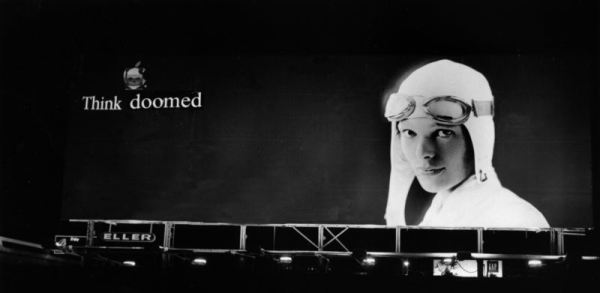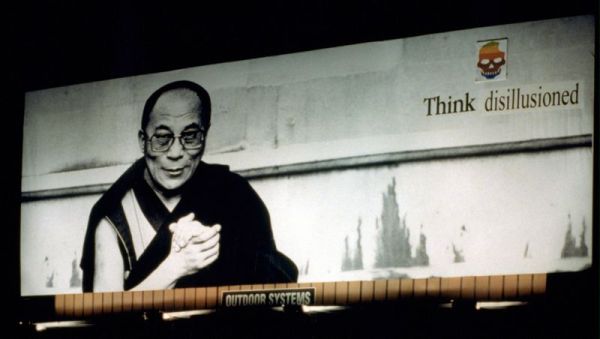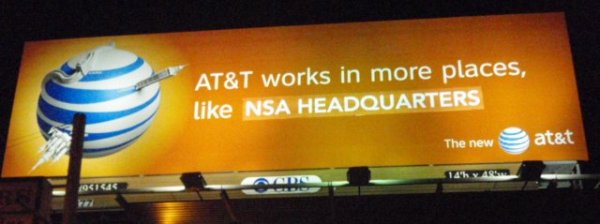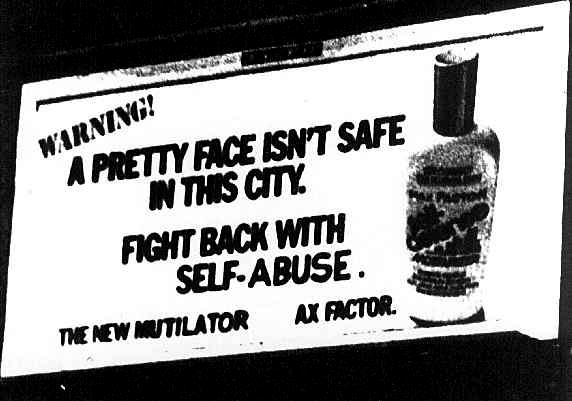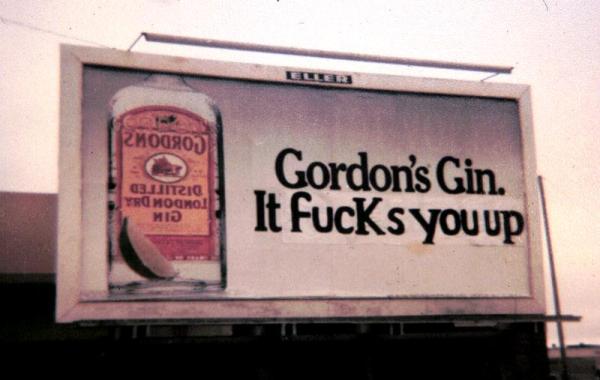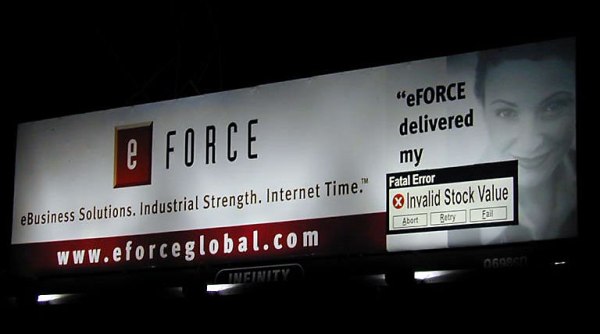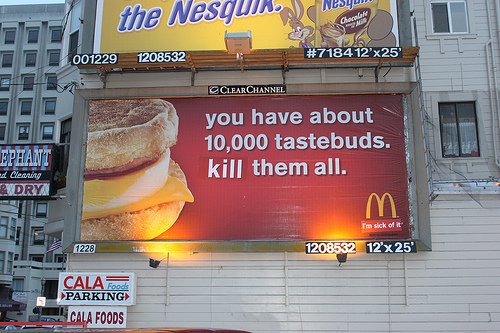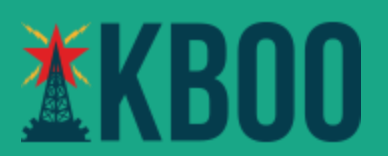Pro Arts Gallery & COMMONS, Oakland, California
June 7 – August 24 2019
Thursday & Friday, Noon – 6:00 p.m. or by appointment
OPENING RECEPTION: June 7 2019 6:00 p.m. – 9:00 p.m.
PDF version of the Press Release ![]()
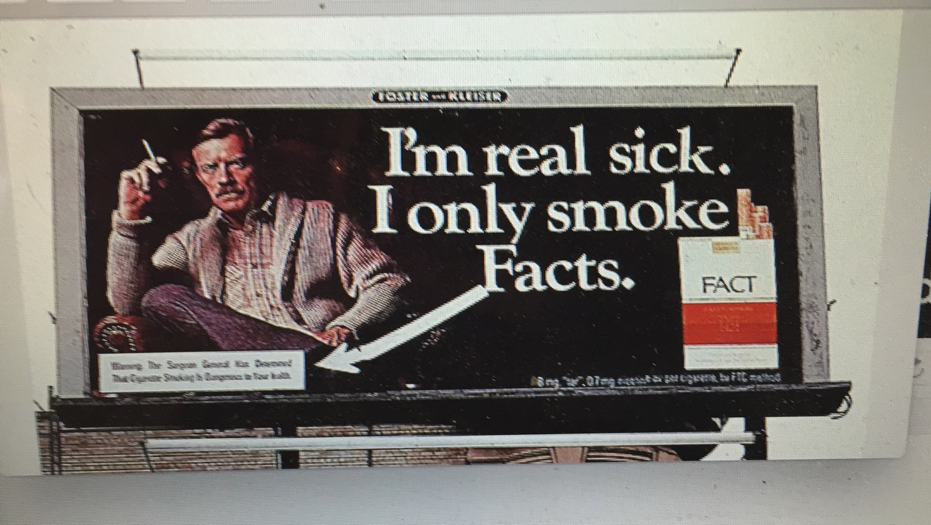
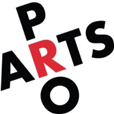
SIGNMAN: John Lawis a three-month long retrospective of John Law– an American artist, culture-jammer, and co-founder of the Cacophony Society, the Burning Man Festival, and other seminal artistic and cultural movements that continue to inspire contemporary artists today. Curator of this retrospective is Executive Director and Curator of Pro Arts Gallery, Natalia Ivanova Mount.
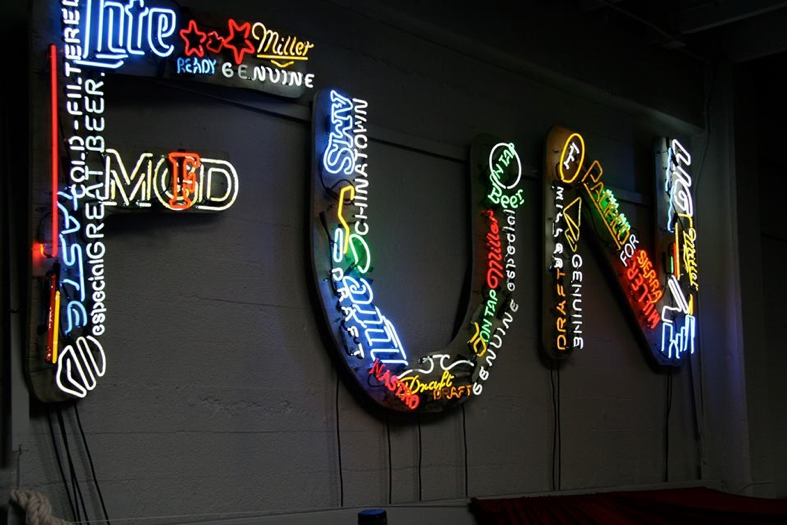
SIGNMAN: John Law will feature original works, spanning the last four decades ofLaw’s art practice.As part of this exhibit, visitors will encounter rare documentation of events, pranks and actions by seminal art and culture movements of the past; neon sculptures; photography; and multi-media installations.
“John’s work offers tales from the underground that challenge our contemporary moment, characterized by a zombie like addiction to social media, weakened ability and will to gather, explore and wonder informally,” says curator of the retrospective Natalia Ivanova Mount.
We need the rituals of the underground today more than ever so we can imagine the world beyond capitalism, beyond commodification, and the menial production of objects and ideas in an art world, beholden to a market value. It is time to give props to one of the most under-recognized luminaries of the avant-garde, John Law.
To contextualize the importance of John Law’s work within the eco-system of the San Francisco independent and alternative art scene, luminaries in their own right, Don Herron, Julia Solis, Ron English, William Binzen, Mark Pauline, and Scott Beale will contribute to the retrospective, through the In Conversationpublic program series of talks and presentations.
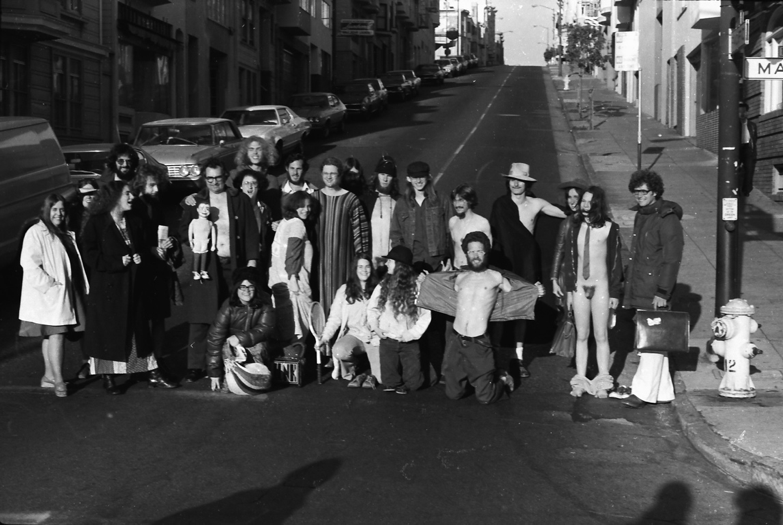
Originally from Michigan, Law has lived in San Francisco since 1976. His first taste in the avant-garde SF art scene of the late 70s was his involvement with the The Suicide Club, founded by Gary Warne in 1977 as a class at San Francisco State University’s free alternative school, Communiversity. The Suicide Club, known for using the format of urban adventures, street theatre, and public pranks, such as the naked cable car rides and stunts like climbing the Golden Gate Bridge, became an important artistic and cultural movement that countered and disrupted the hegemony of the mainstream, modern life. This group is noted as a primary progenitor of the modern urban exploration (UrbEx) movementas well as an early touchstone for the developing hacking, culture jamming and street art movements.
In 1986, when The Cacophony Societyemerged, John joined the rest of the founders. This San Francisco movement, based in the aesthetics of the Dadaist and Situationists, organized events such as the Bastille Day celebration, during which guests dressed in 18th century attire fed cake to the homeless while guillotining political effigies. By the late 90s, The Cacophony Society was big with chapters in LA, Seattle, Portland, over twenty North American cities, and even International countries, influencing forever the trajectory of American transgressive art, pranking, street art, and what the Europeans have termed “psychogeography.”In 2013 John Law, along with Kevin Evans and Carrie Galbraith, co-authored Tales of the San Francisco Cacophony Society, a book published by Last Gasp, documenting this seminal movement. Apropos, The Suicide Club and its later incarnation The Cacophony Society are quoted to be the primary inspiration for Chuck Palahniuk’s novel Fight Club.
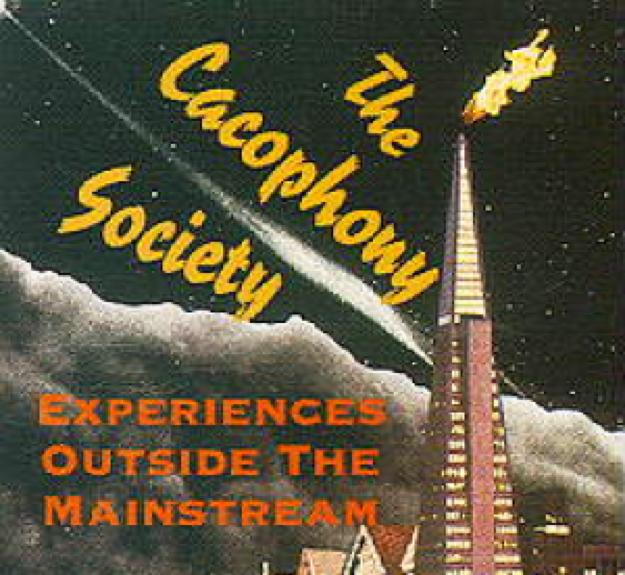
In 1977, John Law cofounded another seminal, guerilla art movement with roots in San Francisco – the Billboard Liberation Front. BLF raison d’etre was to make “improvements” to billboard advertising. BLF influenced contemporary artists like Shepard Fairey, Swoon, and Banksy. Over the years, Apple Computers, Levi’s Jeans, Marlboro and Exxon have all fallen victim to the BLF’s clandestine billboard hacking. To date, the group’s best-known piece remains the 1996 “improvement” job of a Joe Camel ad, which even included the wiring of a new neon sign.
Law has been a neon sign tradesman/contractor for 35 years and his trade was an influence on his avocation as a neon artist.
Law is cofounder of the Burning Man Festival. Along with Kevin Evans, Law was the primary influencer in moving Burning Man to the Black Rock Desert in 1990. He originated the neon skeleton for the figure of the manand was among the first artists to contribute to the desert festival. Due to artistic differences, Law left the Burning Man Festival in 1996.
![]()
“Considered one of the “OG’s” of the UrbEx movementand the art of ‘hacking’ hidden spaces, John continues to adventure with San Francisco’s pranking and transgressive art communities. He also continues to climb bridges, explore tunnels and explore with the current iteration of mysterious “UrbEx” characters. Law is a crew members of Survival Research Labs (SRL) and SF CyclecideBike Rodeo.”
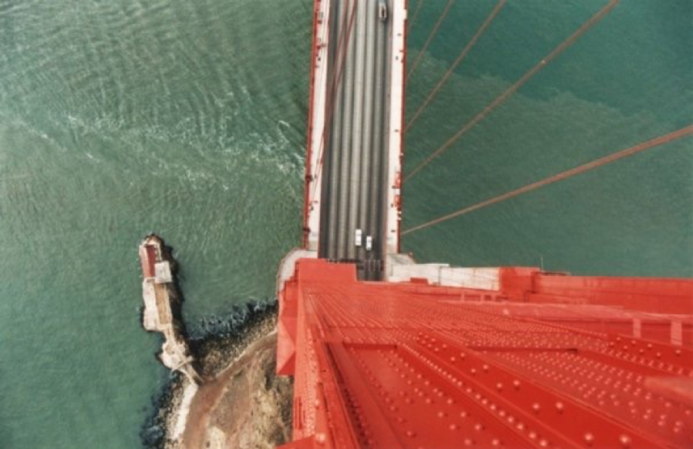
Along with Flecher Fleurdujon, Law directed and produced a feature documentary, Head Trip
that featured bike rodeo antics, and San Francisco artists on a road trip to New York City.
For over a decade now, Law has lectured in museums, libraries, tech conferences and universities around the world on the history of the Bay Area underground art & pranks scene and its influence on the larger world.
Since the late 1980s, Law has conceived, designed and fabricated many mixed media art pieces, all incorporating neon as a primary element of the pieces. In his shop on Treasure Island, San Francisco, Law is currently creating new neon art pieces incorporating various plastic media, transparencies, found objects, and text. Several of his past neon works were part of elaborate pranks including three of the pieces on display in the upcoming SIGNMAN: John Law retrospective.
Public Programs
Opening Reception: June 7 2019, 6:00 p.m. – 9:00 p.m.
In Conversation Public Program Series
Friday June 21 2019 | 7:00 p.m. – 9:00 p.m.| Mark Pauline& John Law.
Thursday June 27 2019 | 7:00 p.m. – 9:00 p.m.| Don Herron& John Law
Tuesday July 16 2019 | 7:00 p.m. – 9:00 p.m.| Julia Solis, Ron English & John Law
Thursday July 25 2019 | 7:00 p.m. – 9:00 p.m.| William Binzen& John Law
Saturday August 24 2019 | 7:00 p.m. – 9:00 p.m.| Scott Beale& John Law
Closing Reception: August 24 2019, 8:00 p.m. – 10:00 p.m.
About the Artist
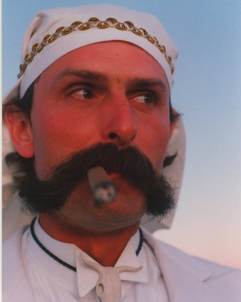
John Law has been embedded in Oakland and San Francisco underground art, pranks and events world since 1977. A member of the legendary Suicide Club, Law was instrumental in forming the later Cacophony Society which in turn gave birth to the Burning Man festival and the Billboard Liberation Front. Cacophony was the inspiration for the novel and movie Fight Club.
Law was a performance artist and an aerial performer in the 1990s working with machine art and theatrical troop Seemen and his on aerial performance troupe Aerial Action Team. An avid urban explorer, Law photographed many major bridges around the world while climbing them creating some unique images.In addition to cofounding and acting as Operations Manager of the Burning Man Festival during its early years,
Law pioneered the use of neon at the now world-famous festival and originated the neon outline for the Burning Man figure. Laws neon work included other desert collaborations, prominently Desert Site Works with photographer/artist William Binzen.
Law, along with with Flecher Fleurdujon, directed the feature film Head Trip showcasing the antics of punk rock performance troupe Cyclecide accompanying The Bay Area’s massive Doggie Diner heads on a cross-country trip to perform at the famous punk club CBGB’s in New York City.
Law is currently involved in creating new neon art pieces incorporating various plastic media, transparencies, found objects, and text. Law has lectured around the world on the history of Bay Area underground arts scene and its influence on the larger world.
Law remains deeply involved in the ongoing worldwide UrbEx scene and collaborates with many extreme underground exploration characters and secretive cabals.
About the Curator
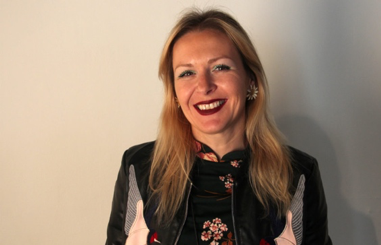
Natalia Ivanova Mount is a dynamic cultural activist and organizer with extensive experience in nonprofit leadership, development and strategic partnerships. She has organized numerous exhibitions and site-specific projects, experimental theatre productions, sound-based performance, film, radio, and public programs and events. Originally from Bulgaria, Mount lived in New York, where in the early 2000, she co-founded FLUX Art Space – a pioneering nonprofit organization that commissioned and produced long-term art projects, claiming the intersection of art, technology, and civic engagement. In 2010, Natalia launched the first radio station in Central New York, Redhouse Radio, that aired exclusively arts and culture programs. During that time, she was also the Executive Director of Redhouse Arts Center, a multi-disciplinary space and residency program, located in Syracuse. In the beginning of her career, Natalia worked at MoMA PS1 and the Clocktower, both located in NYC. Currently, she is the Executive Director of Pro Arts Gallery & Commons where she is actively engaged in the co-creation of the first Art & Culture Commons model in Oakland. Mount is the recipient of numerous prestigious awards in recognition of her cultural practice. She holds a BA in Criminal Justice, MA in Art Market, and MBA in Media Management.
Partners
_______________________________________________________________
SIGNMAN: John Law is funded in part by The Zellerbach Family Foundationand the Rex Foundation.

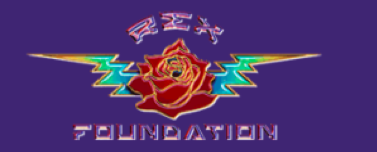
About Pro Arts Gallery & COMMONS
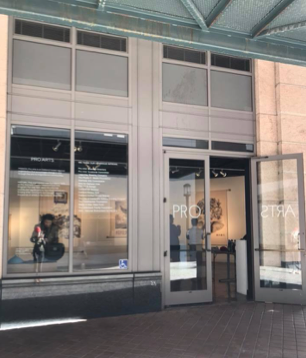
Pro Arts Gallery & COMMONS is a space for art, debate, experimentation, and collaboration. We are a multi-use space in downtown Oakland, California that houses exhibitions, symposiums, debates, music events, film screenings, literary events, residencies and publications. We are also a global networked community that shares values, as well as material and immaterial resources in the co-creation of ideas and critical engagements with the world. Both on local and global level, we are communizing the practice, production and presentation of art.
150 Frank H. Ogawa Plaza
Oakland, CA 94612
Pro Arts
Pro Arts began in Oakland in May, 1974 under the name Alameda County Neighborhood Arts Program. An offshoot of the Arts Commission, the Alameda County Neighborhood Arts Program was funded through the Comprehensive Employment and Training Act (CETA) program and soon after its founding, became a national model for utilizing CETA funds for artists and arts projects. CETA was a federal jobs program that, like the Works Progress Administration (WPA) before it, funneled hundreds of millions of dollars to visual and performing artists. But unlike the WPA, CETA was decentralized; from 1974 to 1981 it was administered by local city and county agencies all over the country.On January 30th of 1981, The Alameda County Neighborhood Arts Program became Pro Arts, after it filled for a change of name. Located at 550 2nd Street in Oakland, the organization continued in its original mission, expanding it to include an exhibition space with a general emphasis on programs and services in support of the visual art field. With its roots in the “alternative arts organization” movement of the 1970s, Pro Arts is still going strong today, serving as the primary venue for experimental, independent visual artists and culture in Oakland.

